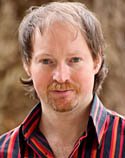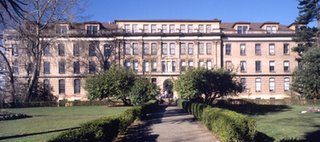If I remember correctly, the last time we chit-chatted was right before Mark took off for New York (quite possibly while he was jostling and lurching his way along one of the terminals at SEA-TAC) —on his way to see New York City Ballet's season-ending repertoire; more specifically to see friends, most notably his good friend and retired dancer, Peter Boal, who, as fate would have it, is now heading up the directors seat at Pacific NW Ballet (PNB) in Seattle. The official PNB press release in PDF (Adobe Portable Document Format) announcing Peter’s appointment to the director seat » www.pnb.org/company/peterboal.pdf
I don't know Peter, personally. To the best of my recollect, I’ve never met Peter, so I certainly don’t know if he knows how to run a company. One thing of which I am certain, now that he is about to take the helm, he and we are about to find out. In all sincerity, I do wish him luck, because what I do know about the job, it won’t be easy —and in this particular case, especially because he is following the formidable and legendary, Francia Russell, the former co-director of PNB along with her husband and choreographer, Kent Stowell —it’s this post Peter is about replace.
Without knowing either Kent or Francia, to encounter a statement in a fashion such as “Francia Russell is, to be sure, nothing short of a force of nature, like a hurricane …” would likely strike a sensible reader to be sensationally amusing but substantively nothing more than bloated fanciful hyperbole. Yet I can remember numerous instances in the past that I’ll bet others who also were there would probably say that such a description wouldn’t be an exaggeration in the least, and I venture to say that few might go further labeling it barely sufficient.
The reality is I cannot draw you a portrait of any reasonable accuracy within the confines of this blog’s entry. Suffice it to say, however, there a select few people at any given moment on the planet, after all the rhetoric and inflated PR has been stripped away, who actually are sublimely talented in what they have done and who have applied that talent to such a degree that it resulted in the achievements and the accolades passed on through the historical paper record, a record the merely hints at the magnitude of their true achievement.
Far too often this sort of compendium, commonly comprised of a sundry press releases and newspaper articles, is the product of far less talent minds and who had had no real first-hand knowledge of the event as they clank out the requisite flotsam on a computer screen, and quite predictably it will not convey the true essence of what had had occurred.
It may be that all histories suffer this to varying degrees but ballet history in particular seems to suffer a good deal more from such a plight, and much of the truth is either held away locked within the separate memories of their contemporaries, with paltry little that successfully escapes in some profoundly truthful way. For Francia Russell and her husband, Kent, both together but also separately for their respective individual achievements, this is that kind of story, a story I hope that will find a way to live beyond the official press releases and approved anecdotes, in the present and of the past.
Peter Boal will have the good fortune of taking the reins of a well-established company that is remarkably well-funded, with an equally well-developed rapport with the community, including an ancillary support network such as the respected ballet school system with studios situated on both sides of
It is only now as I look back to recant the fundamentals of this overture of this ballet company’s recent fascinating past, and through a perspective that extends beyond my own subjective interests, to where I began to glean a much wider perspective. Each of us, dancers, stage crew, lighting designers, costumers, we all have our stories to tell. Regardless of these tales, and reasons we each extol, and regardless of their historical accuracy, and regardless of numerous other people and factors directly associated with PNB history, at its core is the history of Francia and Kent’s phenomenal achievement – the singular force that produced the PNB you see now, whose studios are ensconced within the glittering glass walls of the Phelps center, which anchors one corner of the Seattle Center’s rejuvenation arts renaissance.
In terms of ballet in
Interwoven through my head were the thoughts that would become the fabric of this blog entry, while my conscientious attention was transfixed by the serendipity of that tenuous cellular conversation to my friend and lauded encomium costumer designer, Mark Zappone, the length of the connection held far longer than it originally promised, on his end in the vacuum sealed concourses of an airport to mine as it reverberates against the shadowed cave-like walls of my garage.
Mark’s history mirrors my own at PNB but moves simultaneously outside and well beyond it, and continues still, and by the nature of which it recedes from my own – and perhaps also explains why we talk, though not nearly with the same simpatico tenor, less frequently than we once had. We are worlds away on any given minute, veiled by a shroud of time that slowly stretches further and further back into the past, disrupted from time to time, by these lucid and enceinte moments to share these surrealistic disembodied meetings over the wireless.
A la prochaine fois, ma beiche!


